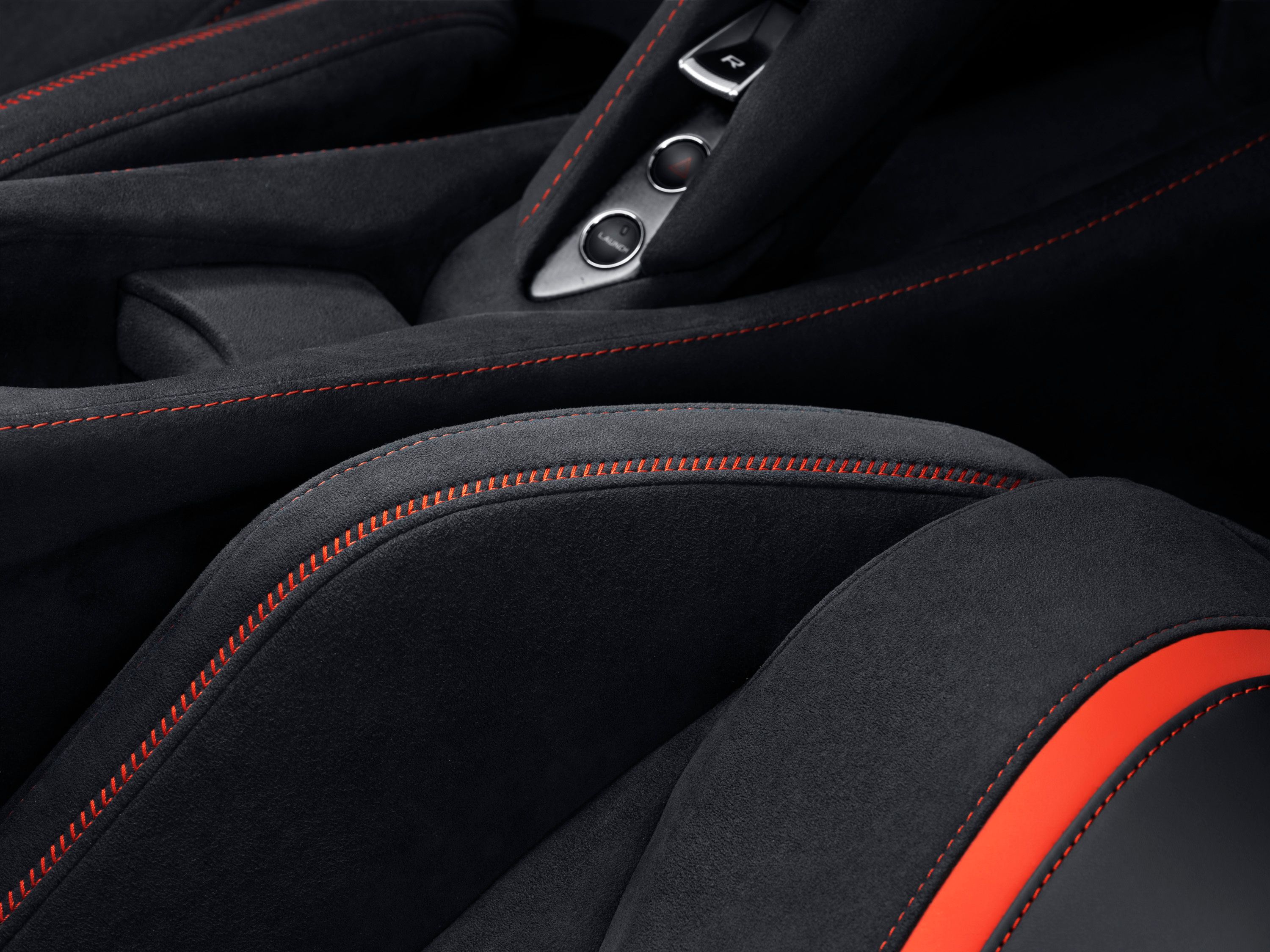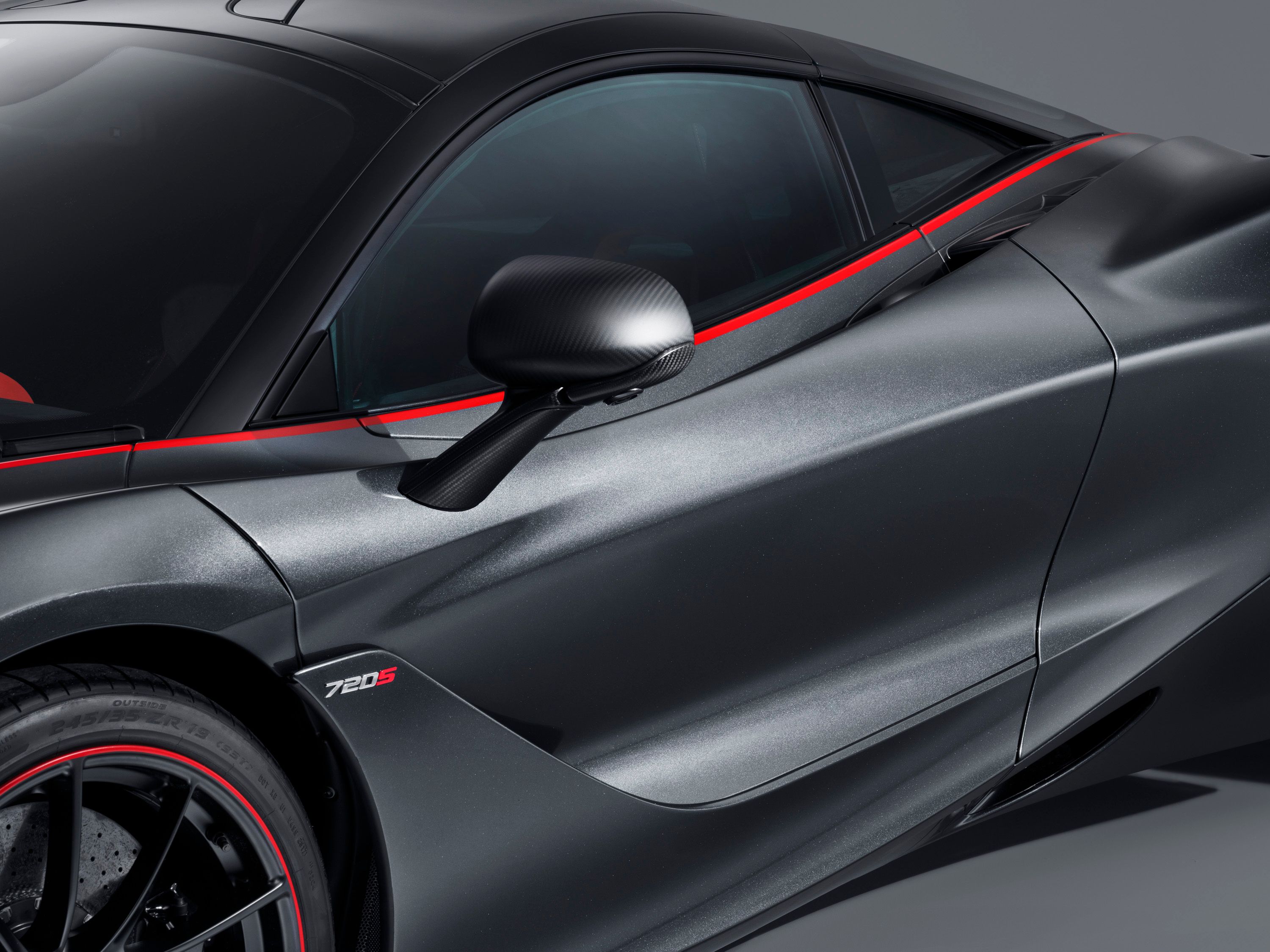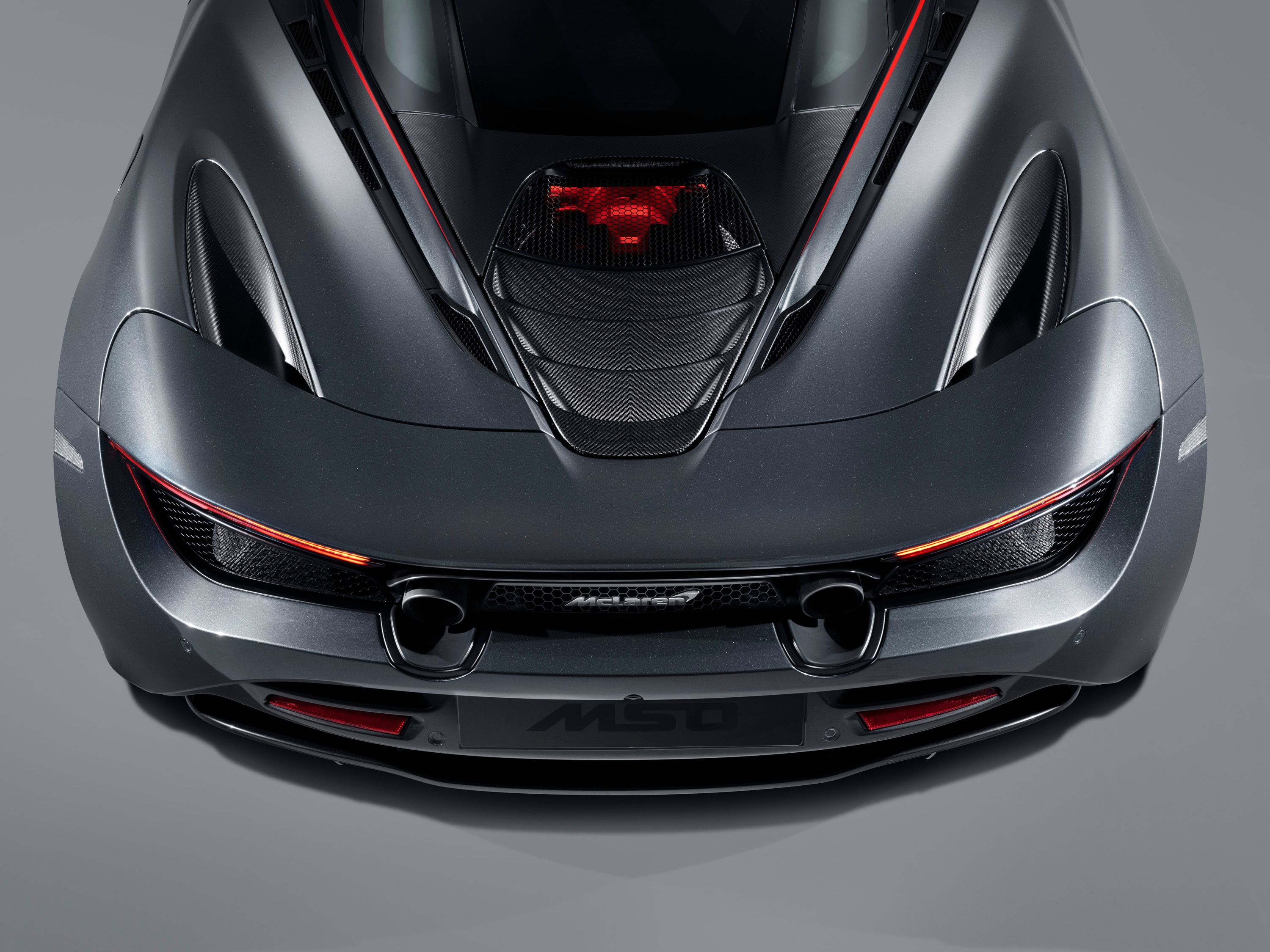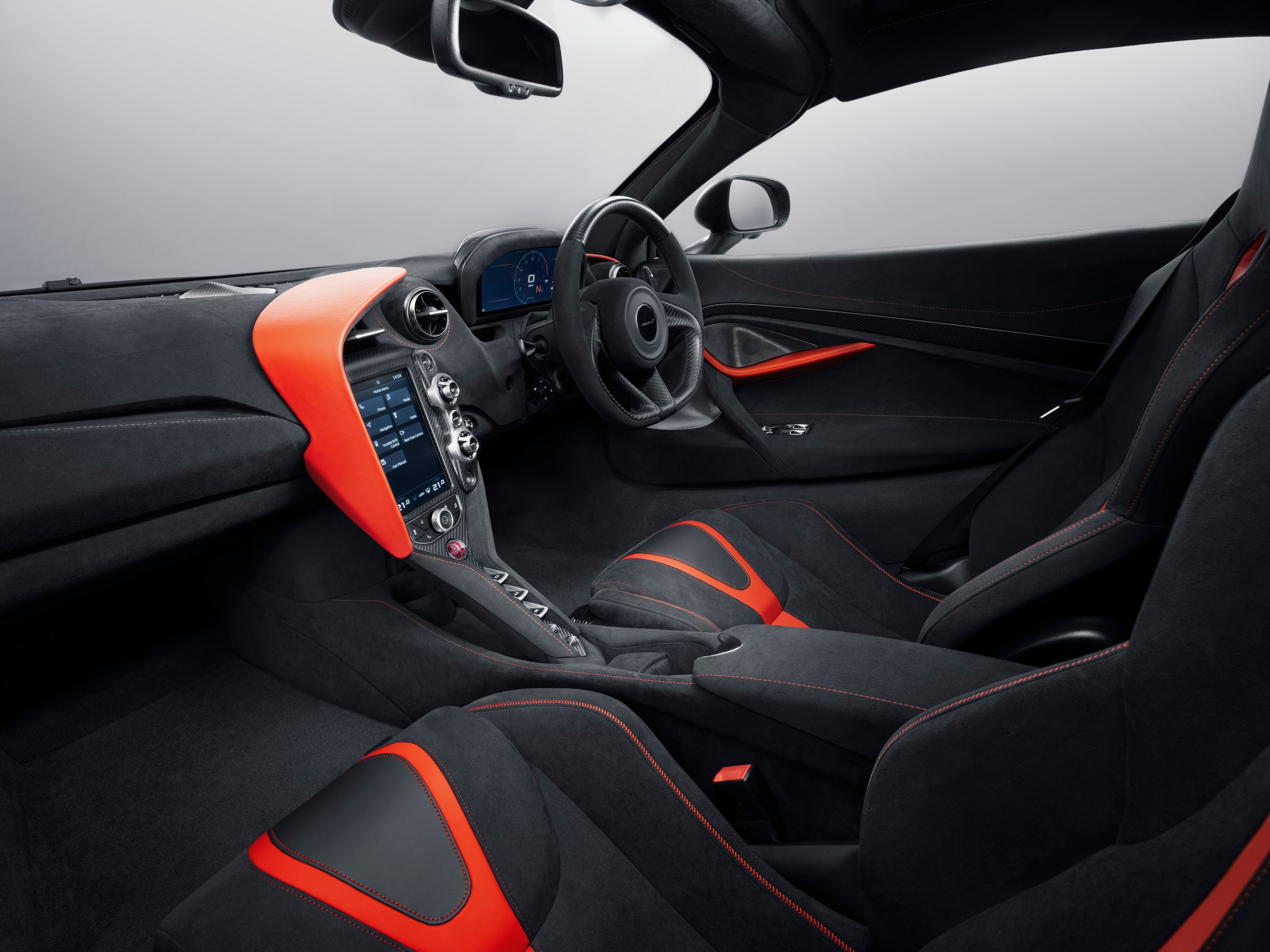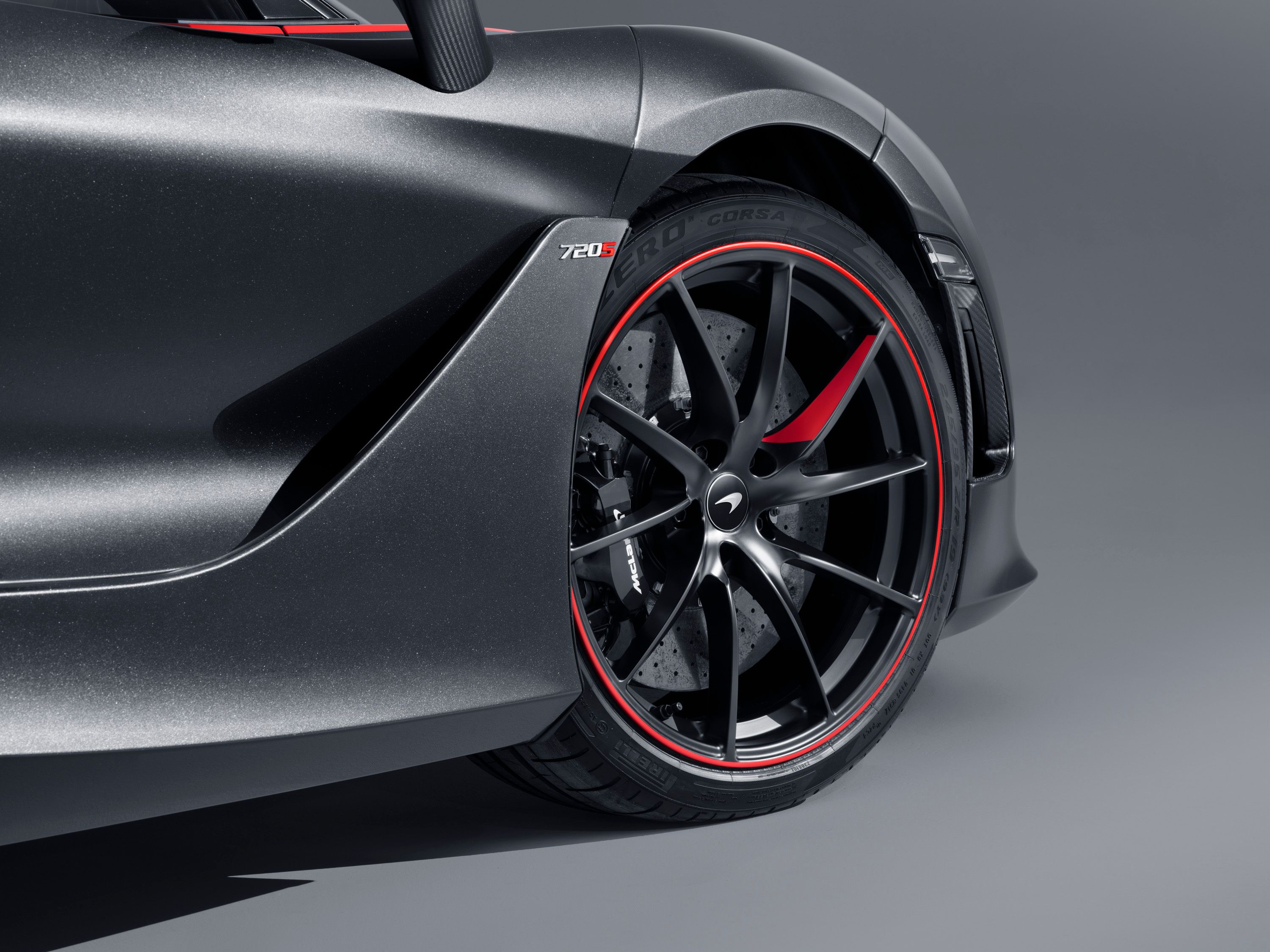The McLaren 720S Stealth Theme is a shadowy tribute to the only McLaren that has ever conquered the Le Mans 24 Hours race, the F1 GTR. It is built by McLaren Special Operations on request from the McLaren dealer in London and, underneath the skin, it hides all the goodies of a 720S Performance.
Launched only last year, the 720S came as the replacement of the popular 650S model. It features heavily revised aerodynamics, a luscious body sculpted with speed in mind, and a brand-new, twin-turbocharged 4.0-liter V-8 engine that is 41-percent new compared to the old 3.8-liter unit.
The 720S Stealth Theme commemorates McLaren's overall victory at Le Mans 23 years ago when a GT1-spec F1 GTR blitzed the whole of the prototype field to win the race, a genuine first for a production-based car as Porsche's previous victory with a GT car, in 1979, was achieved with a silhouette-style 935 that only shared the roof and the windows with the street-legal 911.
2019 McLaren Special Operations 720S Stealth Theme
- Make: Array
- Model: 2019 McLaren Special Operations 720S Stealth Theme
- [do not use] Vehicle Model: Array
What makes the McLaren Special Operations 720S Stealth Theme special
McLaren Special Operations has risen the bar of tailor-made cars yet again with this 720S Stealth Theme built on request from the McLaren dealer in London. It features a dark grey exterior paint, punctuated by some red stripes on the sides and around the nose. The 'Stealth theme' is one of those announced by MSO Bespoke way back when the 720S was unveiled at last year's Geneva Auto Show.
The thin red stripes along the carbon body were actually painted by hand in a process that took over 200 hours to complete. Bare carbon fiber is visible all around the car in places like the exterior rear-view mirrors, rear aerobridges, rear hood, and the rear fender air Intakes.
The 720S is McLaren's replacement for the 650S and, as such, features a re-developed, and enlarged, 4.0-liter twin-turbocharged V-8 engine which develops 712 horsepower at 7,000 rpm and 568 pound-feet of torque at 5,500 rpm. The increase in capacity over the original 3.8-liter unit was achieved by enlarging the lengthening the stroke while 41% of the components are also new.
Weighing in at barely 2,830 pounds dry, the Robert Melville-designed 720S is capable to reach 62 mph from a standing start in just 2.9 seconds thanks to a robotized 7-speed dual clutch transmission. The car's top speed is rated at 212 mph which allows it to cover the quarter mile in just 10.3 seconds. However, the 720S isn't only a straight-line rocket, being able to handle corners well as it employs the Proactive Chassis Control II system that keeps everything in check.
Autocar's take on this McLaren's handling characteristics is quite straightforward: "It won’t quite take shallower corners flat out, but it barely needs more than a nose-settling feather of the accelerator." The 720S is, in terms of raw speed, a crushingly-good machine, faster in every way than the 488 GTB. As Autocar puts it, "the 720S could give that Ferrari a head start of almost three seconds – allowing the 488 to have hit 60 mph before the 720S had even moved – and still beat the Italian to 170mph."
McLaren won there overall on their first attempt, in 1995. It was the third year that GT cars were allowed at Le Mans and, already, Porsche had won the race with such a machine the year before. But that car, the 962 Dauer, was basically a road-converted 962 that was then re-converted for track use to be homologated as a GT car. However, the F1 - created by Gordon Murray to be an everyday hypercar - was closely linked to the road-going version of which 64 were made.
Granted, it wasn't a mass-produced car, but the racing version still was largely similar to the road car. It had a wider track, emphasized by the flared fenders, a large diffuser, and wing out the back and a protruding splitter at the front. That was about it on the outside. No less than 7 F1 GTRs appeared at Le Mans in 1995. The car had its racing debut back in February at the first round of the BPR GT Endurance Series at Jerez, in Spain. There a McLaren won straight out of the box. From then on, it proved unstoppable: it won all bar one of the races held in the BPR before the Le Mans 24 Hours race.
A truly international gathering of manufacturers filled the ranks of the top GT1 class. Porsche brought its battle-hardened 993 GT2, Toyota had the Supra, Honda the NSX, Nissan the GT-R, Ferrari the F40, and there were also entries from Venturi, Jaguar, Lister, Chevrolet and SARD.
In qualifying, as it became customary, the F40s beat the GTRs thanks to their turbocharged engines which had plenty of boost on tap for a banzai-like qualifying lap. The fastest McLaren was, as such, one second off the quickest F40 which was 6th overall. However, the F40s didn't have the reliability. Two of the three entered reached the chequered flag, but they were down in 12th and 18th overall.
The McLaren, though, prevailed. Through rain and cold, the British-built cars muscled their way past the lithe and fragile prototypes and stood in a position to pounce if the LMP1 leader cracked under pressure. In incredible circumstances, the leading No. 13 (no clues here?) Courage C34-Porsche had to stop after dawn because of one of the key sponsors, most likely Texaco that backed Mario Andretti, complained that dirt and debris covered their logos on the side of the engine cover.
The French team led by Yves Courage thus called the No. 13 car in to change the deck with a clean one. However, the dirty one wouldn't come off, and that was enough for the No. 59 Lanza Motorsport-prepared Kokusai Aihatsu Racing McLaren F1 to go through to take the lead. Late in the race, the track dried out and veteran Frenchman Bob Wollek drove like a man possessed to take that elusive Le Mans victory.
It was the F1's most glorious moment and, while the car returned three more times, a second place overall was the best possible result. That's why this 720S built as a tribute is almost an act of normality as a way to look back at a truly great moment in racing.
Further reading
Read our full review on the 2018 McLaren 720S.
Read our full review on the 2018 McLaren 720S Velocity.
Read our full review on the 2018 McLaren 720S Track Theme.
Read our full review on the 1995 - 1997 McLaren F1 GTR.



